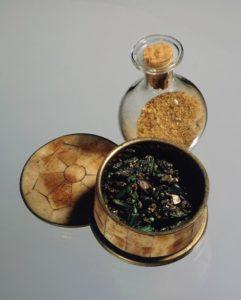Spanish fly: a pest beetle and its unconventional uses
On ash or lilac trees in the summer you can see beautiful green shiny beetles. This is the Spanish fly - an insect from the family of blister beetles. It is also called ash shpanka. This species of beetles lives on a large territory, from Western Europe to Eastern Siberia. In Kazakhstan, two more species of beetles are known under the name Spanish fly.
Content
What does a spanish fly look like: photo
Description of the beetle
Name: Spanish fly or ash fly
Latin: lytta vesicatoriaClass: Insects - Insecta
Squad: Coleoptera - Coleoptera
Family: Blisters - Meloidae
The beetles are large, their body length can be from 11 mm to 21 mm. They are green in color with a metallic, bronze or blue sheen. There are antennae on the head close to the eyes, a red spot on the forehead. The underside of the body is covered with white hairs.
When touched, an adult beetle releases a yellowish liquid from the digestive tract. It contains cantharidin, a substance that, when applied to tissues, causes irritation and blistering.
Reproduction and nutrition
Spanish flies, like many insects, go through the following stages of development: egg, larva, pupa, adult insect.
Females lay eggs in large groups of 50 eggs or more.
The hatched larvae of the first generation, or triungulins, climb the flowers, waiting for the bees. They parasitize on bee eggs, and their goal is to get into the nest. Clinging to the hairs that are on the body of the bee, the larva enters the cell with the egg, eats it and enters the second stage of development. The larva feeds on the reserves of honey and pollen, grows rapidly and thus passes the third stage of development.
Closer to autumn, the larva turns into a pseudo-pupa and so hibernates. In this stage, it can stay for a whole year, and sometimes it can remain for several years.
From a pseudopupa, it turns into a larva of the fourth generation, which no longer feeds, but turns into a pupa, and an adult insect emerges from it in a few days.
With a massive invasion, these beetles can even destroy plantations.
Adult beetles feed on plants, eating green leaves, leaving only petioles. Some spanish fly species do not feed at all.
Insects living in the meadows, are eating:
- green foliage;
- flower pollen;
- nectar.
Prefer:
- honeysuckle;
- olives;
- grapes.
Health damage from spanish fly venom
Until the 20th century, on the basis of cantharidin, a secret found in the yellow secretions of the beetle, preparations were made that increase potency. But they adversely affect human health, even in small doses affect the kidneys, liver, central nervous system, and digestive organs. These drugs have a peculiar smell and an unpleasant taste.
How to deal with spanish fly
The easiest way to deal with Spanish fly is to apply insecticides during the flight of adults. These include:
- You decide;
- Calypso;
- Biscay;
- Belt;
- Calypso;
- Confidor;
- Spark;
- Expert;
- Movento.
Unusual facts
In the Gallant Age, the Spanish fly was used as a powerful aphrodisiac. There are stocks of how the Marquis de Sade used crushed beetle powder, sprinkling it on guests' dishes and observing the consequences.
In the USSR, the poison of these beetles was used as a remedy for warts. Prepared a special patch. Upon contact with the skin, the drug caused an abscess, thereby destroying the wart. All that was left was to heal the wound.
Conclusion
The spanish fly beetle damages trees. The secret secreted by insects on the skin can cause blisters. And getting into the human body through the digestive tract, it can cause poisoning. Therefore, being in nature, in meadows or near lilac thickets or ash plantations, you need to be especially careful to avoid an unpleasant encounter with this insect.
Previous



